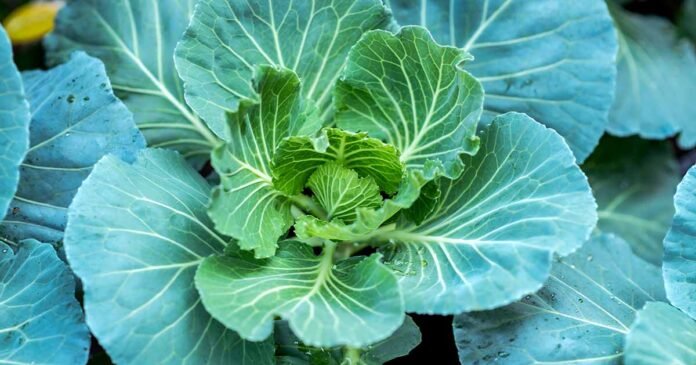7. Tiger
A high-yielding hybrid cultivar with an upright growth habit, ‘Tiger’ plants have large, thick, and slightly savoyed leaves with a green-blue hue.
Known for its satisfying flavor, ‘Tiger’ can be planted as a cut-and-come-again crop for repeat harvests, with leaves that mature in about 55 to 60 days.
Expect mature heights of 20 to 25 inches and a spread of 22 to 25 inches.
You can find seeds in packets of 25, 50, or 100 available via Amazon.
8. Top Bunch 2.0
A vigorous hybrid, ‘Top Bunch 2.0’ is ready to harvest in just 50 days, making it one of the earliest-maturing collards.
Compact plants grow 24 to 30 inches tall with an upright habit, producing smooth, medium-green leaves that are tender and flavorful.
This improved version of the classic ‘Top Bunch’ offers better uniformity and excellent bolt resistance, with reliable yields through warm weather.
It’s well-suited to gardeners who want multiple sowings in a season or those in regions with hot summers where slow-bolting greens are essential.
‘Top Bunch 2.0’ seeds are available from Botanical Interests.
9. Vates
Best suited to Hardiness Zones 3 to 12, this high-yielding heirloom collard cultivar produces dark green, shiny, and slightly crumpled leaves with yellow stems.
With a mounding habit, plants reach about 34 inches in height and they like to spread.
Disease and frost resistant, ‘Vates’ matures in about 75 to 85 days. Plants are slow to bolt.
Seeds are available at Eden Brothers in a variety of packet sizes.
Grow Your Own Greens
Ready to grow your own flavorful and nutritious leafy greens? Whatever the growing zone, with the proper care, collard greens are an annual edible that can flourish in your garden.
Seeds can be started indoors, or sown directly in the garden.
Plant several sets of seeds in succession or cut and come again for multiple collard harvests throughout the season, and plan for exposure to a light frost late in the season in cooler zones for the best flavor.


Before you know it, you’ll be sitting down to plates filled with homegrown collard wraps, savory sides, delectable soups, and canned goods made with this delectable and nutritious vegetable.
Which type will you add to the veggie patch this year? Do you have a favorite cultivar that wasn’t mentioned here? Feel free to drop us a line in the comments!
And for more information on growing your own collard greens in the vegetable garden, give these guides a gander next:





